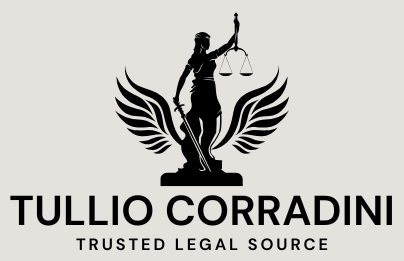Ohio offers for residence tax exemptions for authentic property held by 501(c)(3) non-gain businesses. However, the exemption is not computerized. The exemption commonly applies to true home owned by a qualifying 501(c)(3) non-financial gain business, offered that there is a charitable use of the real assets.
Ohio legislation provides that real house owned by non-revenue establishments which is applied exclusively for charitable, community or academic reasons is exempt from taxation. On the appropriate submission of an Software for Genuine House Tax Exemption and Remission from a non-revenue, the Ohio Tax Commissioner establishes regardless of whether an organization qualifies for this exemption. The Tax Commissioner considers two crucial things: the use of the assets and purpose of the business, in determining no matter whether a property is qualified for exemption.
Taking into consideration the “Use” of the House
The very first thing to consider, the “use” of the home, will have to be an unique charitable use of the home. Commonly talking, a charitable use has been characterized as expert services delivered on a nonprofit basis to these in want, with no regard to race, creed or ability to shell out. R.C. 5709 additional supplies criteria for commonly qualifying uses these kinds of as, for instance:
- “Community or region centre for tunes, drama, the arts and related fields to foster public and educational interest
- Museum for the arts, sciences, historical past or young children open up to the typical community
- Residence open up to the general public for a charitable, academic, or general public curiosity without the need of a “view to profit” this kind of as assets donated to grow to be a public park.”
Ohio legislation provides exemptions for quite a few takes advantage of by suitable non-gains. To illustrate, a non-exhaustive record of eligible assets tax exempt non-earnings utilizes is outlined underneath:
Qualified Home Tax Exempt Non-Financial gain Use |
Ohio Revised Code Portion |
| Charitable unbiased dwelling amenities | 5709.12 |
| Charitable or instructional science-linked amenities | 5709.12 |
| Children’s homes | 5709.13 |
| Dedicated prehistoric earthworks and historic grounds | 5709.18 |
| Federal microloan intermediary takes advantage of for smaller small business lending, financial growth, job education, entrepreneur education | 5709.12 |
| Graveyards | 5709.14 |
| Housing for people today with developmental disabilities | 5709.121 |
| Housing for individuals with psychological overall health sickness or substance use ailment and their family members | 5709.121 |
| Human system materials acquiring, processing, distribution for research and improvement | 5709.12 |
| Memorial or cemetery associations or veterans businesses | 5709.17 |
| Museums | 5709.121 |
| Mother nature preserves and environmental projects | 5709.09 |
| Qualified low revenue housing for development and lease or sale | 5709.12 |
| Faculties, churches and faculties | 5709.07 |
| Veterans funds and monuments | 5709.15 |
Looking at the “Purpose” of the Corporation
The 2nd consideration for eligibility for non-earnings property tax exemption contemplates the “purpose” of the group. Ohio regulation specially states that a qualifying institution or organization is a charitable, instructional or condition or political subdivision generating a charitable use of its property, as determined in Chagrin Realty, Inc. v. Testa, 154 Ohio St. 3d, 352, 355 (2018). Even so, courts apply the legislation these kinds of that the exempt assets must be owned by an establishment, which may perhaps be a charitable or non-charitable group retaining property solely for charitable functions. Put simply, the concentration is on the main exercise of the institution. For illustration, if there is a landlord leasing to a tenant with a charitable function, the routines of the landlord will determine regardless of whether the corporation qualifies, not the functions of the tenant with a charitable reason and use of the property.
Qualification for Home Tax Exemption is Not Automated
Non-income companies do not quickly qualify for Ohio residence tax exemption. Non-earnings companies with 501(c)(3) status are:
“Corporations, and any neighborhood upper body, fund, or foundation, structured and operated exclusively for spiritual, charitable, scientific, tests for general public protection, literary, or instructional reasons, or to foster national or global beginner athletics competitors (but only if no element of its things to do include the provision of athletic amenities or products), or for the avoidance of cruelty to children or animals, no section of the net earnings of which inures to the reward of any personal shareholder or unique, no sizeable component of the actions of which is carrying on propaganda, or if not making an attempt, to influence laws (besides as if not offered in subsection (h)), and which does not take part in, or intervene in (together with the publishing or distributing of statements), any political campaign on behalf of (or in opposition to) any prospect for general public office.”
When it is crucial to identify no matter whether an group is a 501(c)(3) non-earnings, Ohio law controls for the needs of the assets tax exemption.
Standards for Exemption Could Change
Criteria supplied by R.C. 5709 offers steerage on whether a 501(c)(3) would be established to be a charitable institution suitable for exemption. It is important to fully grasp that the standards can differ marginally by use. Even though the precise definition of an eligible establishment may fluctuate by the exemption application pertinent to each individual use, R.C. 5709.121(C) describes what institutions are conclusively presumed to be charitable establishments:
- “The establishment is a nonprofit corporation or affiliation, no element of the internet earnings of which inures to the profit of any private shareholder or particular person
- The institution is exempt from federal money taxation less than part 501(a) of the Internal Revenue Code
- The the greater part of the institution’s board of directors are appointed by the mayor or legislative authority of a municipal company or a board of county commissioners, or a combination thereof
- The principal goal of the institution is to support in the development and revitalization of downtown urban locations.”
Specifics pertaining to the use of the property by a charitable institution are vital for identifying whether or not an institution qualifies for Ohio’s non-revenue tax exemption. KJK gives advice and providers to guide you as a result of the tax period. If you have any issues, you should make contact with KJK Lover Richard Morehouse ([email protected] 216.736.7292) or Hannah Albion ([email protected] 216.736.7268) or yet another member of KJK’s Tax & Tax Exemption exercise team.











More Stories
Employers Beware: California Bill Could More than Double the Mandatory Paid Sick Leave Available to California Employees!
“Incidental” Versus “Direct” Third Party Beneficiaries Under Insurance Policies in Which a Party is Not an Additional Insured | California Construction Law Blog
Judge Calls Out “Human Rights Lawyers” Over Incompetence